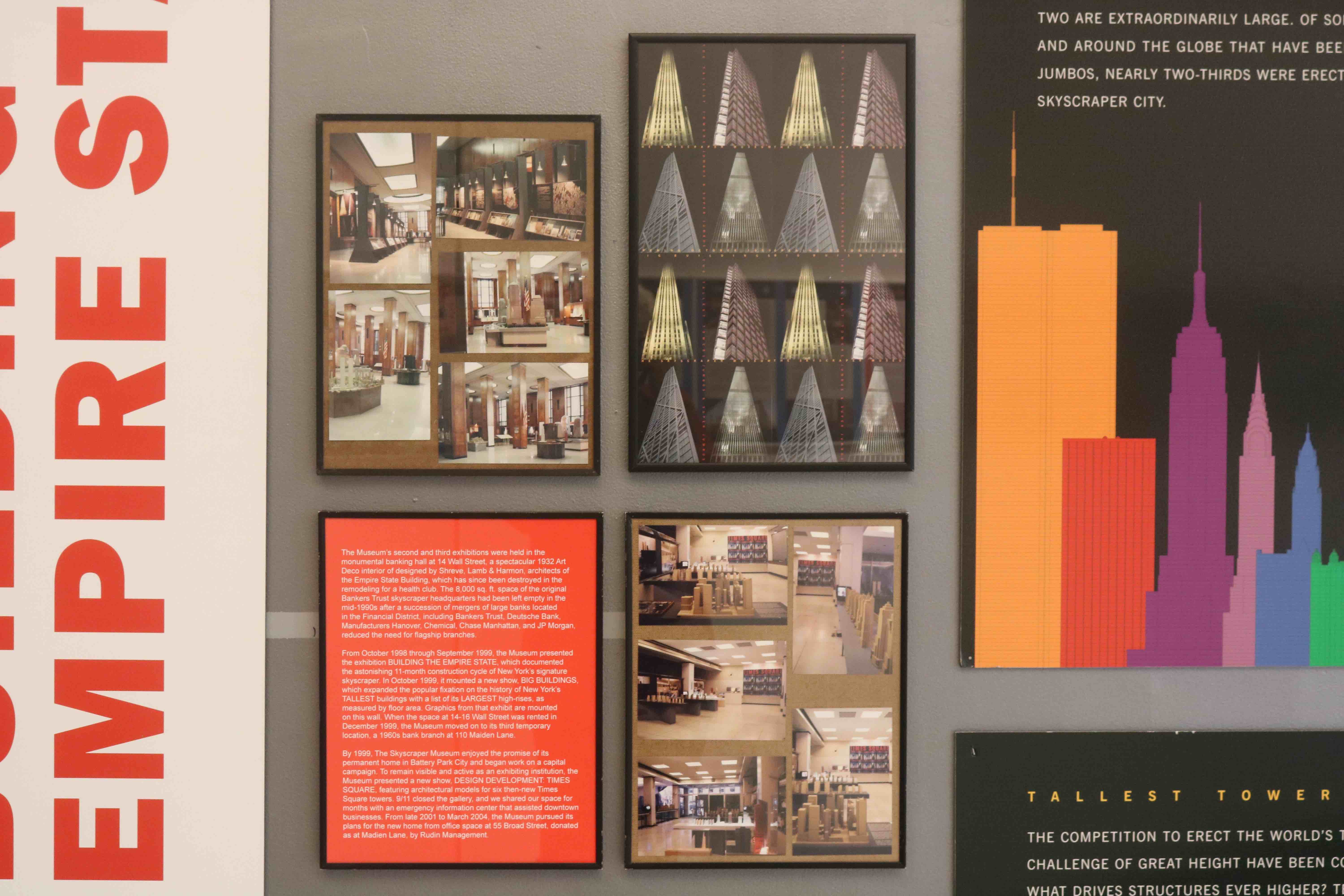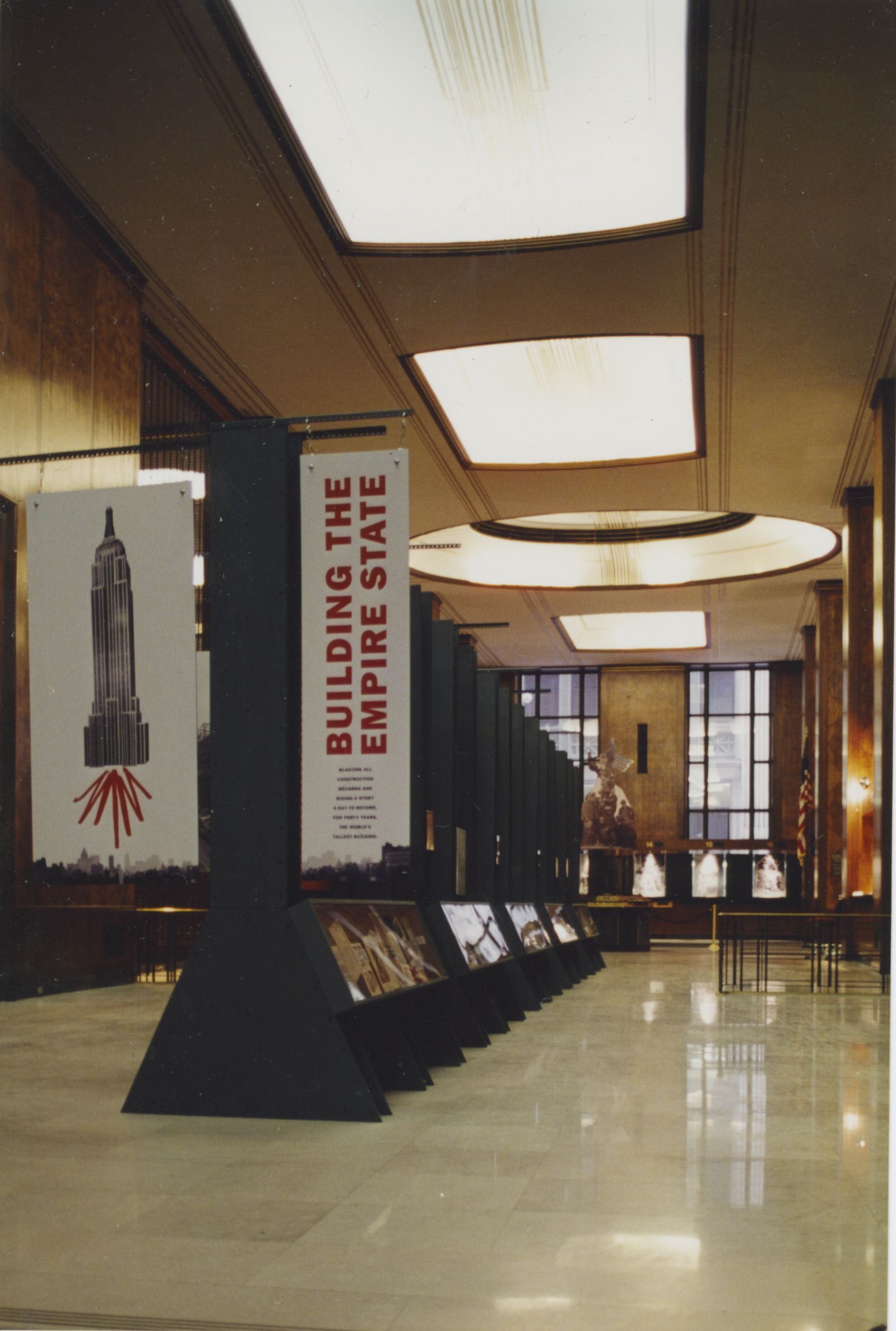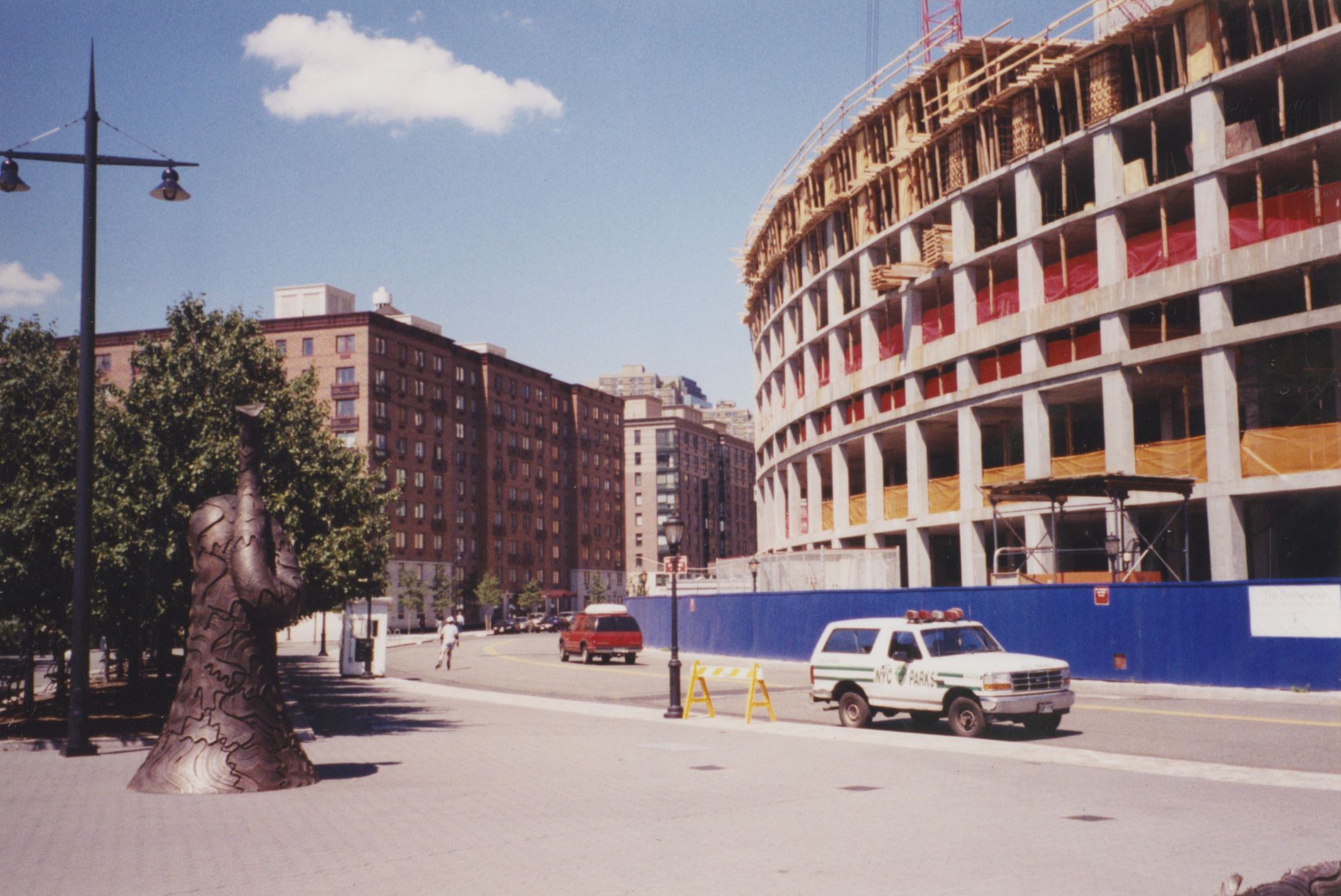The Skyscraper Museum is devoted to the study of high-rise building, past, present, and future. The Museum explores tall buildings as objects of design, products of technology, sites of construction, investments in real estate, and places of work and residence. This site will look better in a browser that supports web standards, but it is accessible to any browser or Internet device.
STARTING THE SKYSCRAPER MUSEUM, 1997- 2000

The recession in commercial real estate in the mid-1990s enabled The Skyscraper Museum to get its start. Vacancy rates for office buildings in the historic Financial District were especially high – around 25 to 30 percent – because so many banks and financial services companies had merged or moved out of the area. Low rents did draw new types of tenants, such as architectural and engineering firms, to some in older, landmark-quality towers, but retail space languished. Vacant ground-level space in former flagship banking halls was especially affected because the grand scale of the interiors could attract no suitable tenants.
In this economic climate, the nascent non-profit Skyscraper Museum was able to find space to mount its pop-up exhibitions, which was leased for free, so long as it promised to leave the space on a 30-day notice. The Museum occupied three such vacant banking halls from 1997 through October 2001: 44 Wall Street and 14 WallStreet and 110 Maiden Lane. Photo prints of the four exhibitions at those venues are collaged on this wall, along with graphics created for those shows by Pentagram, with Michael Gericke as the design partner.
The Museum’s inaugural exhibition “DOWNTOWN NEW YORK: The Architecture of Business / The Business of Buildings” opened in April 1997 in donated space at 44Wall Street, at the corner of William Street.

Buiding the Empire State exhibition, 1998.
The Museum’s second and third exhibitions were held in the monumental banking hall at 14 Wall Street, a spectacular 1932 Art Deco interior of designed by Shreve, Lamb & Harmon, architects of the Empire State Building, which has since been destroyed in the remodeling for a health club. The 8,000 sq. ft. space of the original Bankers Trust skyscraper headquarters had been left empty in the mid-1990s after a succession of mergers of large banks located in the Financial District, including Bankers Trust, Deutsche Bank, Manufacturers Hanover, Chemical, Chase Manhattan, and JP Morgan, reduced the need for flagship branches.
From October 1998 through September 1999, the Museum presented the exhibition BUILDING THE EMPIRE STATE, which documented the astonishing 11-month construction cycle of New York’s signature skyscraper. In October 1999, it mounted a new show, BIG BUILDINGS, which expanded the popular fixation on the history of New York’s TALLEST buildings with a list of its LARGEST high-rises, as measured by floor area. Graphics from that exhibit are mounted on this wall. When the space at 14-16 Wall Street was rented in December 1999, the Museum moved on to its third temporary location, a 1960s bank branch at 110 Maiden Lane.

 Top: Gallery rendering Credit: Skidmore, Owings & Merrill.
Top: Gallery rendering Credit: Skidmore, Owings & Merrill.
Bottom: Construction of The Skyscraper Museum.
